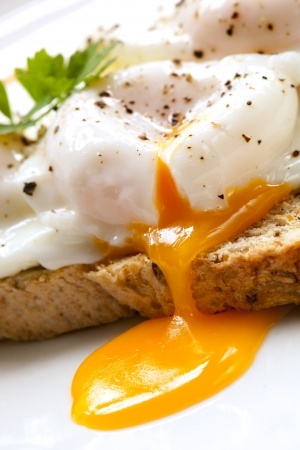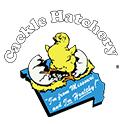
The poached egg is an absolute staple of brunch menus that tends to baffle and amaze novice cooks. To the uninitiated, the poached egg seems to occupy a state of matter that is neither liquid nor solid. It’s a delicate balance that takes a steady hand and a cool head to achieve. With a little practice, however, you too can perfect the technique and treat yourself to a delicious meal of eggs Benedict this weekend.
First Thing’s First: Gathering Materials
- A pot of water
- A small cup (just large enough to accommodate one cracked egg)
- Pinch of Salt
- White Wine Vinegar
- A Whisk
- A Slotted Spoon
- Kitchen Paper
- One Fresh Egg
The Prep Work
Look for a pot that is relatively wide. This will make the process easier. Fill the pot with a few inches of water; roughly twice the depth of the space the egg will occupy. Add the pinch of salt and a capful of vinegar to the water, and bring it to a steady boil. The salt is simply for seasoning, while the vinegar will help the egg hold its form in the water. While you’re waiting for the water to boil, crack the egg into your small cup and set it aside.
Cooking the Egg
Once the water reaches a boil, turn the heat until it settles in to a gentle simmer. A rolling boil will tear the egg apart, so you’ll want to keep a close eye on the heat here. Once you’ve achieved a simmer, take your whisk and stir the water to create a gentle whirlpool motion in the pot. While maintaining that whirlpool motion, take your cup and pour the egg into the pot as close to the water as possible. This will minimize splashing and ensure the egg retains its form. As you drop it in, the whirlpool motion should cause the egg to wrap around itself as it cooks. Let the egg sit in the center of the pot while it begins to cook, and give the water an occasional stir with your whisk to keep the egg from sticking to the bottom of the pot.
If you like a runny yolk, let the egg cook for about 3 minutes. If you prefer a more solid yolk, give it an additional 30 seconds or so. Once the egg is cooked, scoop it out of the water with your slotted spoon, let it drain over the pot for a moment, and then deposit it on your sheet of kitchen paper. And there you have it! A delicious poached egg perfect for a weekend treat.
At this point, we may as well note that there are little devices called egg poachers that streamline the process, eliminating the need for the finer points of the whirlpool method, but where’s the fun in that? Egg poachers may be easy, but the whirlpool method allows you to achieve that beautiful runny yolk and “egg pocket” aesthetic you want from a poached egg. Give it a try! It might take a few attempts to get the knack, but you won’t be disappointed with the results.


